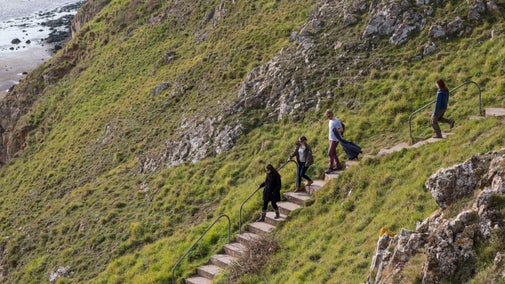Collard Hill large blue butterfly trail
Somerset
Heading through woodland glades, this walk will take you up Collard Hill in search of the large blue butterfly. Collard Hill was opened by the National Trust, on behalf of the Large Blue Partnership, for the public to come and see this rare and fascinating butterfly.
Near to
Glastonbury TorStart point
Ivythorn Hill National Trust car park, grid ref: ST488340Trail information
More near here
Cheddar Gorge trail
Explore the famous cliffs of Cheddar Gorge, Somerset, on this exhilarating National Trust walking route.

Get in touch
Our partners

We’ve partnered with Cotswold Outdoor to help everyone make the most of their time outdoors in the places we care for.
You might also be interested in
Walking
Explore some of the finest landscapes in our care on coastal paths, accessible trails, woodland walks and everything in between. Find the best places to walk near you.

Walking in Somerset
From the majestic crags of Cheddar Gorge and the sea views at Bossington to gentle strolls through Tudor parkland at Montacute House, these are some of the best walks in Somerset.

Things to do at Glastonbury Tor
Discover what to see and do at the Tor, a site of religious significance for over 1,000 years that's home to some amazing wildlife.

Visiting Glastonbury Tor with your dog
Glastonbury Tor is a one pawprint rated place. Find out more about exploring the Tor and the surrounding countryside and orchards with your dog.

Follow the Countryside Code
Help to look after National Trust places by observing a few simple guidelines during your visit and following the Countryside Code.

Staying safe at National Trust places
The special places in National Trust care sometimes come with a few risks for visitors, be it coastline or countryside. Find out how to keep safe throughout your visits.

Cotswold Outdoor: our exclusive walking partner
Learn about the National Trust’s ongoing partnership with Cotswold Outdoor. Find out how they help us care for precious places and the exclusive discount available for National Trust supporters.



